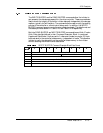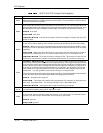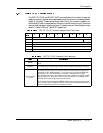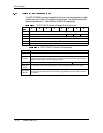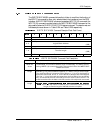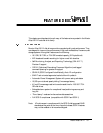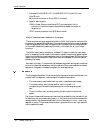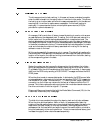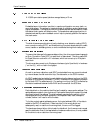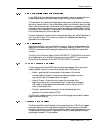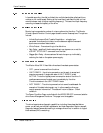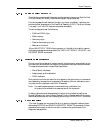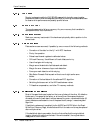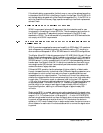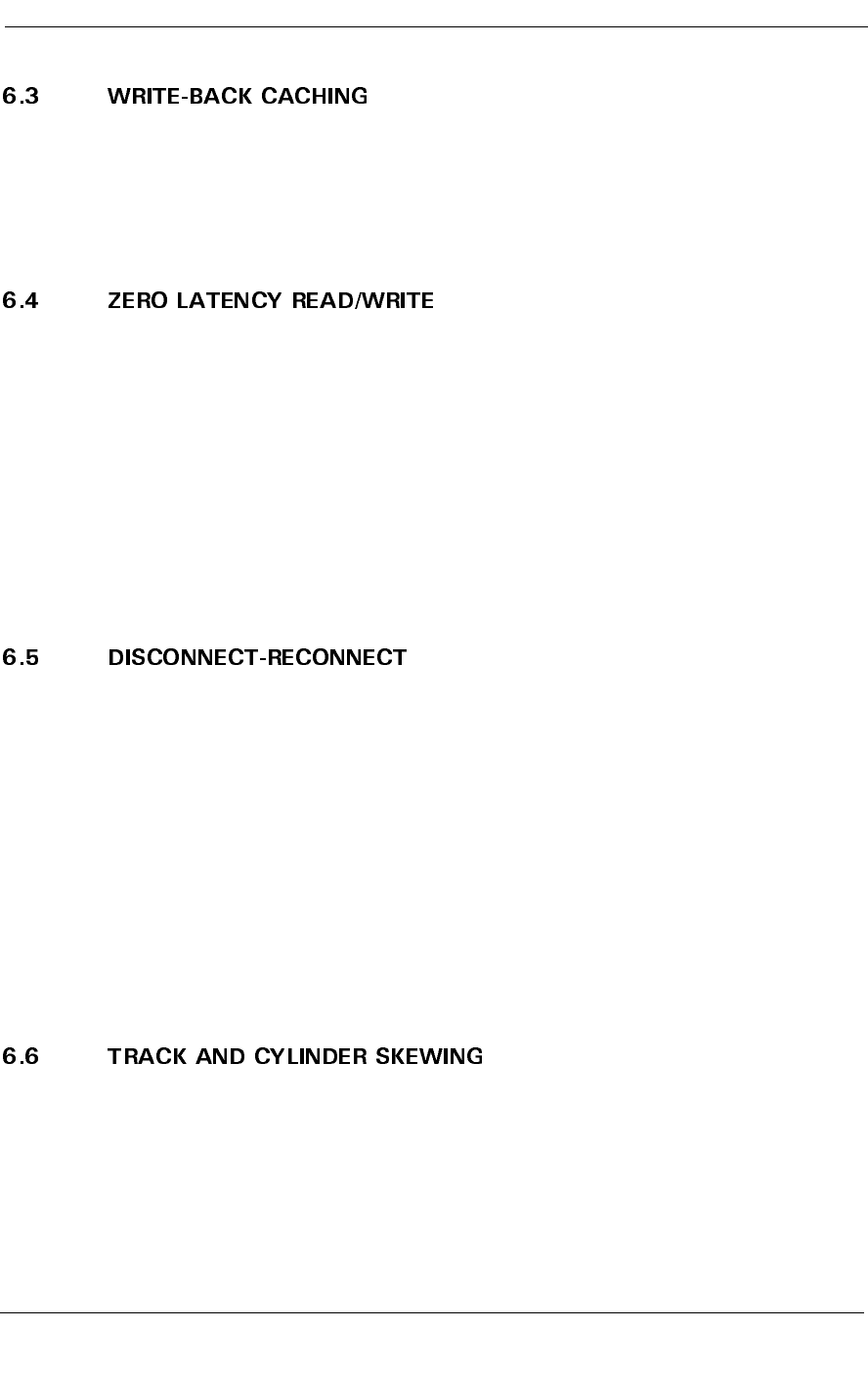
Feature Descriptions
Maxtor Atlas 10K III 6-3
The drive supports write-back caching. In this case, writes are considered complete
when the data is loaded into the cache, before it is written to the media. This allows
the host to go on to other tasks, while the drive assumes responsibility for the data and
ensuring that it is written to media as soon as possible. If write-back caching is
employed, it is recommended that an uninterruptible power source (UPS) be
provided for optimal data security.
An average of half a revolution of latency is saved by starting to read or write as soon
as a seek settles on the designated track. If reading, the initial data read is stored in a
buffer (cache) until the actual starting address data block is reached and read. The
starting address data is then transferred to the bus as the rest of the data is transferring
from media to the buffer. When the initial data address read is reached again, that data
in the buffer is transferred to the bus. This ensures that the track data goes out in media
order and eliminates the rotational latency associated with waiting for the starting
address to rotate to the head.
Writing works essentially the same way only in reverse. The data is first transferred to
the drive's buffer. After seeking to the desired track, a write pointer is set to the current
location of the head on the track and writing is commenced from the buffer, starting
at the corresponding place in the data.
System throughput can be improved by disconnecting the drive from the initiator
during physical positioning operations, thereby freeing up the SCSI bus for other I/
O processes. After the drive has determined that there will be a delay, it disconnects
itself from the SCSI bus by sending a DISCONNECT message and enters the BUS
FREE phase.
When the drive is ready to resume data transfer, it arbitrates for the SCSI bus and, after
winning arbitration, reconnects to the initiator and sends an IDENTIFY message via
the MESSAGE IN phase. This revives the I_T_L nexus (initiator-target-logical unit
connection) so the initiator can retrieve the correct set of data pointers for the I/O
process. The initiator restores the active pointers to their most recent saved values, and
the drive continues to finish the original I/O process.
Disconnect-Reconnect is controlled with the Mode Select Command (15h) for the
Disconnect/Reconnect (02h) mode page.
The disk drive improves data throughput by skewing track and cylinder addresses.
When the drive switches heads or tracks, or both, to access sequential data, the
rotation of the disk media allows one or more physical blocks to pass by the read/write
head before the head is ready to continue the transfer. Skewing adjusts the block
addresses so that the head switch and settle times and the media rotation coincide to
bring the head exactly to the next logical block. This minimizes rotational latency (and
increases throughput) when data is accessed sequentially.



